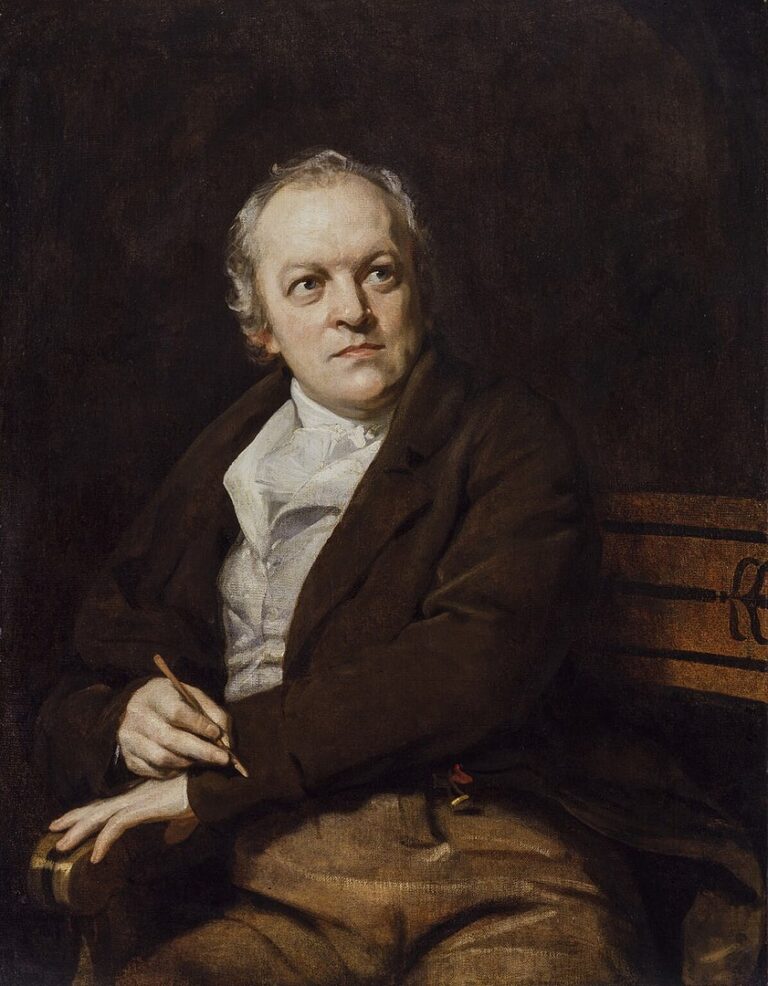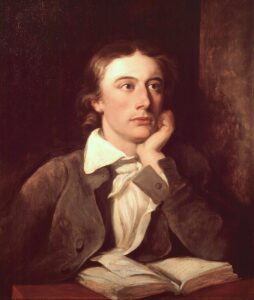Introduction
The life of William Blake can be described as a colorful tapestry filled with unique experiences and significant achievements. From his poetry to visual art, he has left an indelible mark on the world. This article will explore this legendary historical figure’s biography, poems, and significant achievements.
Born in 1757, William Blake was an English poet and painter who impacted England’s Romantic period. He deeply believed in imagination as a source of creativity and inspiration, which led him to develop many works based on religious themes and moral issues. His writing style was often seen as revolutionary due to its use of vivid imagery, symbolism, metaphor and allusion.
Although Blake did not receive much recognition during his lifetime, he is now considered one of the great innovators in both literature and art throughout history. In addition to being known for producing some of the most influential pieces of work from the romantic era, he also created numerous engravings that other artists used to further their creative endeavors.
Overview
William Blake was an incomparable genius who shook the foundations of poetry, art, and literature in a way no one had seen before. His life and works have left a profound influence on modern culture that is still felt today. William Blake was born on November 28, 1757 in London, England to working-class parents, young Blake saw visions from early childhood. He claimed to have seen angels and spirits throughout his life, which would later come to shape the work he produced during adulthood. At age ten, Blake began writing poems and learning engraving with his brother James; this marked the beginning of a lifelong career as an artist and poet.
Blake married Catherine Boucher at 27 years old after teaching her how to read and write so they could communicate effectively. This was the start of their partnership, giving rise to Blake’s most iconic artwork, including Songs of Innocence (1789) and The Marriage of Heaven & Hell (1790). In addition to these works, Blake used printing techniques such as greeny stains or colored prints for many of his works on copper plates – something that had never been done before.
Throughout his lifetime, Blake worked relentlessly, producing over 3000 drawings and paintings and hundreds of illuminated manuscripts containing religious themes influenced by Quakerism, Gnosticism, and Neoplatonism. While much has been speculated about the exact nature behind his inspirations for his writings, it seems clear that Blake found within these drawings, not just creative expression but also inner peace through faith in God – something which further fuelled both his artistic passion as well as social activism throughout his adult life. Sadly, William Blake died at 70 on August 12, 1827, after a long battle with an illness that had been affecting him for some time before his passing.
Overview Of His Achievements
The life and works of William Blake are a testament to the brilliance of his creative genius. He was an English poet, painter, printmaker, and engraver who lived in the Romantic period during the late 18th century through early 19th century England. His works have made him one of the most influential figures throughout history for his artistic achievements and philosophical beliefs.
Many accomplishments mark his biography; he wrote poems deeply rooted in spirituality, produced artwork that displayed vivid imagery, created innovative printing techniques, and developed a unique style of painting that blended classical European styles with an imaginative flair.
Additionally, he published numerous books, including Songs of Innocence (1789) and The Marriage of Heaven and Hell (1790-1793). Furthermore, several pieces from these collections had been engraved into relief etchings on copper plates – a revolutionary method employed by Blake.
His work has left an indelible mark on British culture and literature – so much so that it has been described as prophetic. This description is due to his formal, poetic language and powerful images evoking strong emotions among readers. From ‘And did those feet in ancient times’ being sung at sporting events to references in popular television shows such as Doctor Who, Blake’s influence can be seen everywhere today. His legacy will live long after he has passed away – a reflection of how important his work remains in our society.
Early Education
He received an education in art from an early age. His parents recognized his talent in drawing and painting, so they enrolled him at Henry Pars’ Drawing School when he was 10. Later, Blake would receive guidance from the famous English writer William Hayley to pursue his artistic career.
At 14 years old, Blake began attending the Royal Academy of Arts as an engraver student. He studied classical anatomy and life drawing techniques while learning to etch copper plates for illustrations. It is there where he developed a unique style of printmaking which became his signature craftsmanship. During this time, Blake wrote many poems that would later become part of his published works.
By 1779, Young Artist Magazine had already featured several drawings by Blake about Ancient Greece mythology. From that moment forward, William dedicated himself entirely to writing poetry and illustrating books with biblical stories until the end of his life. This inspired other authors and artists who sought similar themes in their works during the Romantic period.
Therefore, through dedication and hard work, Blake made great strides toward creating timeless pieces of literature and visual arts that still resonate today among modern readers and viewers alike.
Early Works As a Young Artist
Throughout his career, he had a deep love for literature and art. He found inspiration from the Bible and other religious texts available to him as a child. From an early age, Blake began expressing himself through poetry and artwork.
In the years before 1800, Blake created some of his most notable works such as Songs of Innocence (1789), The First Book of Urizen (1794) and America: A Prophecy (1793). These pieces showcased his unique style of combining written text with illustrations to create what is now referred to as ‘illuminated printing.’ During this period, many critics regarded his work as controversial due to its commentary on religion, politics and morality at the time.
Although Blake lived during a tumultuous era, he continued to produce new works throughout his life, including Milton: A Poem (1804-1808) and Jerusalem (1820). Scholars have celebrated his legacy over the centuries since, particularly for how it reflects the turbulent times he lived and how it inspires modern writers today.
Achievement of William Blake In Literary Works, Paintings And Engravings
Blake was a prolific artist of the late 1800 and early 1900 whose achievements in literary works, paintings, and engravings were like stars that shone brightly across the night sky. He has left behind an impressive legacy of creativity for generations to come.
In terms of his writing prowess, he was most renowned for his collection of poems “Songs of Innocence” (1789) and “Songs of Experience” (1794). His other notable works include “The Marriage of Heaven and Hell” (1790-93), ‘Vala or The Four Zoas’ (1796-1807), “Jerusalem: The Emanation Of The Giant Albion” (approximately 1804–20).
Additionally, his work “London” is considered one of the best examples of Romantic poetry. To summarize some key features of Blake’s poetic style: it often used symbols from mythology; he wrote with energy and passion; and he cut short conventional forms.
While many are familiar with Blake’s writings, not as well known are his artistic accomplishments in painting and engraving.
Here is a list that highlights four major pieces:
- Illustrations were done for Dante’s Divine Comedy
- Series named – Job
- Paintings – Nebuchadnezzar
- Engraved illustrations for Robert Blair’s ‘The Grave’.
Blake may not have achieved fame during his lifetime but he now stands out among writers and painters who continue to inspire us through their work. A master storyteller who conveyed powerful messages in simple words, he remains an influential figure within culture more than two centuries later.
Influence On Writers, Artists And Modern Society
Phenomenal, powerful and prodigious – William Blake was a poet whose influence has been felt across centuries. His works remain seminal to this day, with his impact on writers, artists and modern society continues to be profound. As the 18th century’s most celebrated romantic poet, engraver and artist, here are four ways in which he left an indelible mark:
His collection of lyrical verse remains some of the most outstanding poetry ever written, from “The Tyger” to “Jerusalem.” His artistry with words put him at the forefront of literature during the Romantic period where his work was held up as one of its cornerstones. Indeed, such was his skill that is still studied today by aspiring poets seeking inspiration from one of history’s great bards.
True to form for a man who saw no boundaries between art forms, Blake’s distinctive style extended beyond writing into painting and engraving. He created illuminated prints that enchanted viewers around Europe back then and continues to do so now – encapsulating beauty through visual expression as much as any Renaissance master before or since.
Many authors have cited Blake as having had a direct influence on their writings due to his unique approach towards storytelling; an example is Richard Henry Horne, who wrote ‘Orion’ following the extensive reading of Blake’s epic poem ‘Milton.’ Furthermore, it can also be seen that contemporary playwrights like Howard Brenton were influenced by the themes explored within ‘The Marriage Of Heaven & Hell’ when creating shows like ‘In Extremis.’ It is clear that despite over two hundred years passing since his death, Blake continues to inspire untold generations after him.
Finally, even outside creative circles, there exists recognition for what he achieved in life – manifesting itself in monuments dedicated to him all over England, including London’s Hyde Park Corner and numerous statues throughout towns and cities.
This demonstrates how influential he has been culturally and socially, inspiring people from all walks of life regardless of race or creed. William Blake truly stands among Britain’s great minds: a visionary ahead of his time whose legacy will live on always.
Frequently Asked Questions
What Are His Religious Beliefs?
He believed in the power of imagination and its ability to create a new world. His works reflect this idea, as many contain visions of supernatural beings and otherworldly realms.
Blake was deeply influenced by religion throughout his life, particularly Christianity. He studied the Bible extensively, learning about its stories and teachings. In addition, he also formed his own philosophy that blended elements from various religious texts, mysticism, and mythology. This unique combination led him to develop some unorthodox views on spirituality which are reflected in his work today.
Blake’s faith has been debated by scholars for centuries due to its complexity – while certain aspects align with Christianity, others contradict it entirely. This ambiguity has left many questions unanswered about what exactly Blake believed regarding religion.
How Did Blake Influenced Modern Culture?
His achievements had a wide-reaching influence on modern culture. Blake’s life works and illustrations have inspired many, both in terms of their lyrical content as well as the philosophical questions they raise. This article will discuss how his works continue to shape our collective cultural identity today:
Firstly, Blake’s writings are often cited as having an impact on literature. One example is the Beat Generation writers of 1950s America. These authors were heavily influenced by his work; some commentators see him as providing them with a spiritual guide through which they could explore ideas around freedom and creativity. Furthermore, several contemporary poets have been inspired by his themes of justice and revolt.
In addition, it can be argued that William Blake also shaped popular culture in recent years. Several musicians from different eras cite him as an influence on their work, including Leonard Cohen and Bob Dylan; for example, the latter used elements from The Tyger in Just Like Tom Thumb’s Blues (1965). Moreover, references to Blake frequently appear in films and television shows such as Twin Peaks (1990), where one character wears a t-shirt featuring lines from Jerusalem – “And did those feet….”
Finally, evidence of Blake’s continuing relevance today exists even outside of traditional art forms. For instance, Apple Inc.’s logo features a silhouette of Isaac Newton sitting beneath an apple tree – directly referencing “The Ancient Of Days” illustration found within Europe A Prophecy (1794).
Here we see how aspects of his writing still resonate deeply with us culturally, signifying something transcendent about the human experience.
- Literature
- Beat Generation Writers
- Contemporary Poets
- Popular Culture:
- Music – Leonard Cohen & Bob Dylan
- Films & TV Shows – e.g., Twin Peaks
- Non-traditional Art Forms:
- Apple Inc.’s Logo
- Religion & Spirituality
What Themes Did William Blake Explore In His Works?
His works, including poetry and visual art, have explored various themes. These include religion, spirituality, nature, human perception and imagination, and power politics. He often employed symbolism to convey his ideas in powerful ways.
He was deeply interested in spiritual matters such as the relationship between humans and God or angels. His works explore these relationships with vivid imagery that captures the reader’s attention. Secondly, his great appreciation for nature is reflected in his work through lyrical descriptions of landscapes and animals. Thirdly, he wrote about how humans perceive reality differently based on their experiences and beliefs.
Many of his writings are concerned with political issues such as oppression and tyranny by those in positions of power.
Blake sought to challenge existing conventions while exploring complex concepts such as understanding one’s place within society or formulating responses to oppressive systems. His works remain relevant today due to their timelessness; they inspire readers to think more critically about social issues and personal identity.
How Did William Blake’s Contemporaries Perceive His Works?
He was well-regarded among his contemporaries for the exceptional artistry of his works. His poems explored themes such as divine love, spiritual enlightenment, human suffering and oppression – topics that resonated deeply with readers at the time. But how did these same peers perceive his work?
In general, Blake’s poetic works were met with great admiration from both authors and critics alike. Such praise often centered around his innovative approach to poetry which blended elements of mythology, religion and Romanticism into one unique style. Moreover, many believed that he had an innate ability to capture complex emotions in words like no other author before him. As a result of this talent, he quickly became known as one of the most influential voices of English literature during the late eighteenth century.
The visual aspect of his works also earned him much acclaim – particularly within artistic circles. He is credited with being a pioneer in creating illustrations that enhanced the reading experience while simultaneously reflecting underlying messages found in each poem or story. While some might consider them primitive by today’s standards, they nonetheless showed great imagination and skill – something which captivated viewers far beyond his lifetime.
Blake’s prolific output throughout the years has provided countless generations with thought-provoking material on life’s greatest questions; it is clear why so many people have looked upon his works fondly over the centuries.
How does Blake Manifest his Political Views on Art And Poetry?
His works were often imbued with political messages, which reflected his views on social injustice, freedom and revolution. This essay will explore how Blake’s artworks and poetry reflect his politically charged beliefs.
The first example of Blake’s political views manifesting in his work is ‘The Marriage of Heaven and Hell’ (1790-93). The poem utilized satire to criticize religious institutions for their oppressive nature and lack of compassion towards those who suffered from poverty or mental illness. It also contained revolutionary language, such as “Let us depart; it is not worth the while / To stretch our bones beside a dying fire,” demonstrating Blake’s support for social reform.
Another example can be found in some of his paintings, such as ‘Newton’ (1795), which featured an image of the scientist Isaac Newton sitting beneath a barren tree amidst desolate surroundings. This painting was intended to illustrate the dangers posed by the Industrial Revolution, warning against its effects on the natural environment and human beings alike. Similarly, in ‘Satan Watching the Caresses of Adam and Eve’ (1808), he depicted Satan not as an evil figure but rather one that felt powerless due to mankind’s enslavement under religion – another criticism of many traditional values at the time.
Blake’s works thus provide insight into his thoughts regarding various aspects of society including politics, religion, industry and inequality. Through them, we can better understand him as an individual and life during this era more generally.
Conclusion
He’s always be remembered as a brilliant poet, painter and engraver whose influence on Romanticism, literature, and visual art endures today. His life was filled with great achievements but also marked with poverty and suffering. He believed in the power of creativity to inspire change and bring a greater understanding of what it meant to be human – something his work continues to do today. Through his art, he explored themes of love, faith, imagination and freedom and encouraged others to follow their paths in life.
Despite the obstacles during his lifetime, he left behind an impressive legacy of writing and artwork, which continues to influence modern culture today. Blake taught us how we could gain insight into how people lived during the 18th century and appreciate the courage it took for someone like William Blake to create something unique in a largely conservative society.




